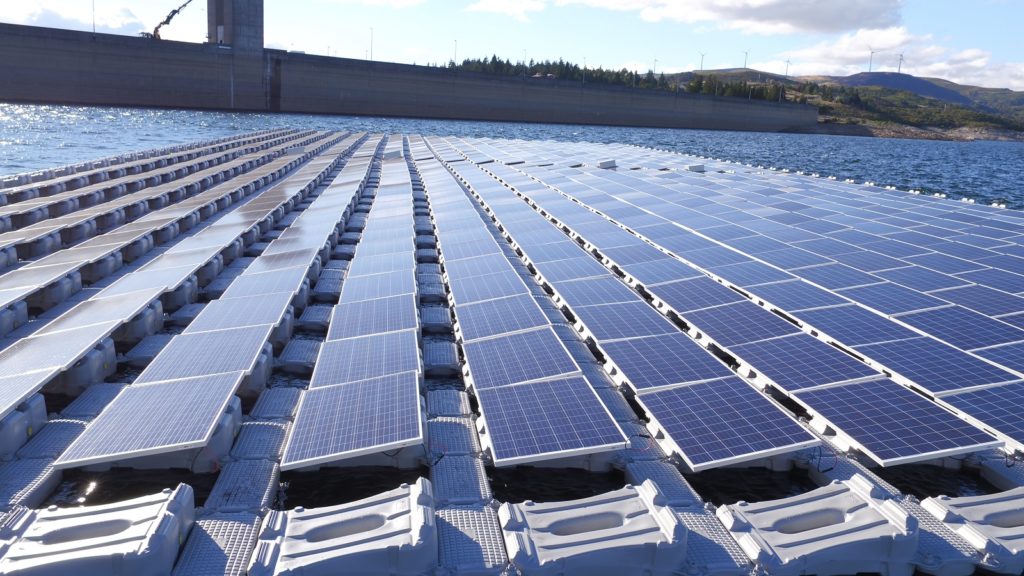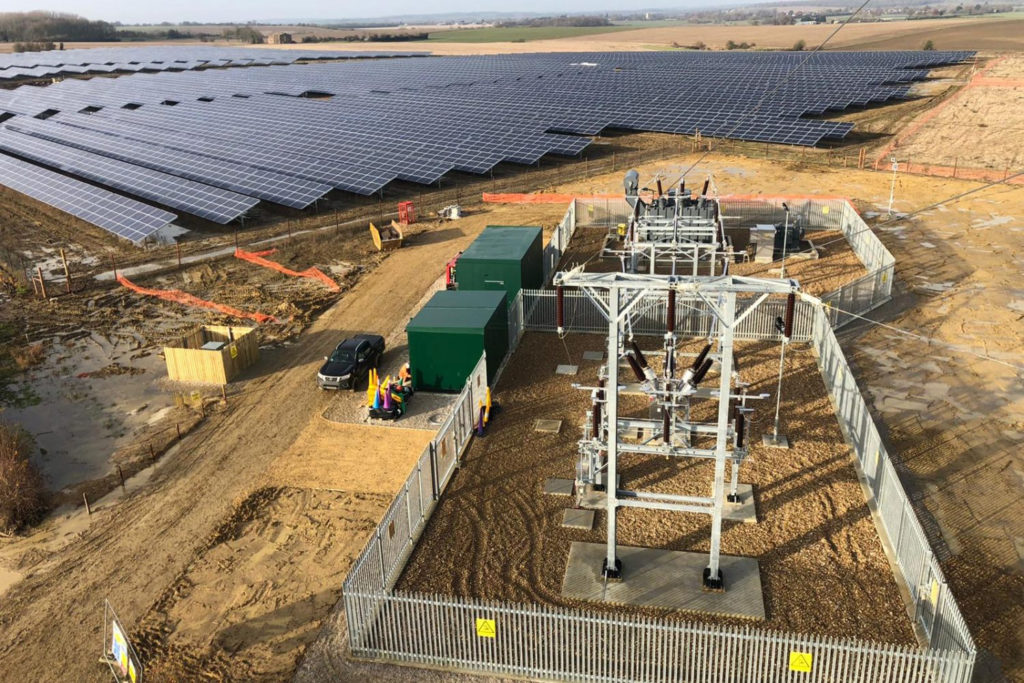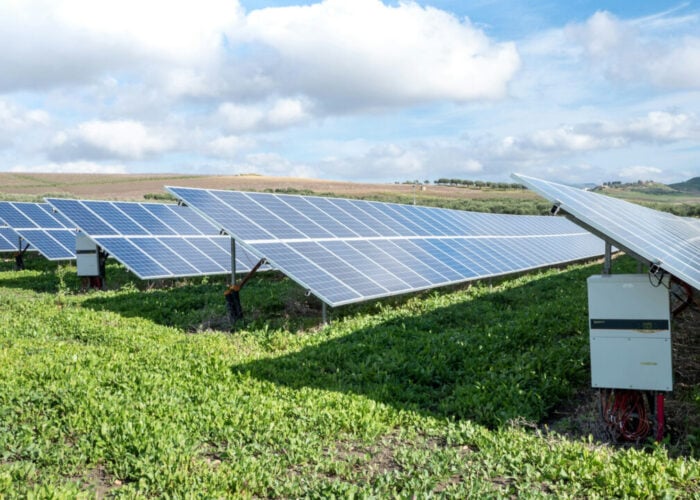
Not only will solar be the dominant source of new power generation in Europe by 2025, cementing its position as the third largest market for solar globally, but the continent has placed the asset class at the very heart of its COVID-19 recovery strategy. As part of a week-long special report on PV Tech Premium, Liam Stoker, Edith Hancock and Jules Scully explore the drivers for solar in Europe, the key markets and the challenges that remain. The latest installment of PV Tech’s special feature on Europe’s solar renaissance rounds-up the rest of the continent’s key markets, examining the key drivers behind solar growth in Portugal, France and the UK, amongst others.
Portugal
Although it made headlines for receiving record-low prices in both its solar auctions to date, Portugal’s PV sector deployed just 153MW of capacity last year and is now restrained by complex licensing processes and grid connection scarcity.
Unlock unlimited access for 12 whole months of distinctive global analysis
Photovoltaics International is now included.
- Regular insight and analysis of the industry’s biggest developments
- In-depth interviews with the industry’s leading figures
- Unlimited digital access to the PV Tech Power journal catalogue
- Unlimited digital access to the Photovoltaics International journal catalogue
- Access to more than 1,000 technical papers
- Discounts on Solar Media’s portfolio of events, in-person and virtual
The country’s first solar auction took place in 2019 and resulted in 1,292MW of capacity awarded. This was followed by another last year, which included an energy storage modality, allocated 670MW of capacity and saw Spanish renewables company Enerland post the record bid of €11.14/MWh for a 10MW lot, with the low prices reflecting the limited grid access. Winning bidders from both tenders contacted by PV Tech Power say they are progressing with project development as planned.
Due to potential land availability issues in the future, Portugal’s government is now preparing a third solar auction for “non-conventional surfaces”, which will include lots for projects at land beside motorways as well as floating installations on water bodies such as reservoirs.
Alongside the auctions, solar projects can also be submitted via the market, by agreement with the network operator, ensuring part of the financing for the expansion of the electricity network, according to Pedro Amaral Jorge, CEO of Portuguese renewables association APREN. He says the country’s clean energy sector faces “two major problems that must be quickly addressed” if it is to achieve its climate goals: licensing and networks.
“The renewable electricity sector today faces two major problems in Portugal that must be quickly addressed to ensure the achievement of climate goals and objectives: licensing and networks.”
Pedro Amaral Jorge
With the current licensing process requiring promoters to deal with several agencies, APREN is carrying out a project that aims to bring together all the stakeholders that work in renewables licensing to find solutions that can streamline the process.
A spokesperson from EDP Renewables, which is majority-owned by Portuguese utility EDP, says that despite recent efforts to simplify the process, the company has faced greater difficulty in licensing projects with the introduction of additional intermediate procedures.
EDP Renewables participated in both of Portugal’s auctions, securing a contract in 2019 for its 142MW Ribatejo solar project, which is expected to be installed next year. The company will consider its participation in the next one when the rules have been fully defined. The spokesperson says that in order to guarantee the completion of projects, the progress of the development process of plants presented for auction should be more demanding.
With just over 1GW of solar installed as of the end of 2020, the country is already behind its energy and climate plan, which forecasted that 2GW would have been deployed by then. Pedro Amaral Jorge says that while Portugal is among the most promising European markets for solar PV development, extra effort will be required to reach its target of 9GW deployed by 2030.
He says: “This extra effort is partly due to the resolution of problems and barriers that are currently identified in the sector, both with regard to the complexity and length of the licensing process, the unavailability and inadequacy of the electricity grid, and the inappropriate imposition of fees and disproportionate taxes on producers.”
France
France’s government has called for 44.5GW of solar to be installed in the country by 2028, but figures from trade body Syndicat des énergies renouvelables (SER) published in February last year warned that the country must double its current installed PV capacity by 2023 to meet future targets. More recently, grid operator RTE has said that that a downturn in economic activity related to the COVID-19 pandemic has created a downturn in the deployment of solar, meaning that the country’s 2023 targets for deployment appeared “out of reach”.
Alexandre Roesch, who became chief executive of SER in 2017, tells PV Tech Power that things are starting to move in the right direction. The country said last October it would guarantee tariff support to 341MW of solar projects following completion of an oversubscribed auction that featured reduced prices compared to previous rounds, and more than 452MWp of solar was awarded at auction this February, with energy prices jumping by 4.7%. Roesch points to France’s “clear calendar of tenders” providing opportunities for further deployment, and a move towards a new feed-in-tariff for installations below 500kW capacity to boost the rooftop segment.
However, access to land remains one of a handful of challenges for developers looking to install more solar capacity, with Roesch describing this as a bottleneck for the market to overcome.
One solution currently being considered is combining existing farmland with new solar technology. Solar PV systems could become a “very interesting compliment” to France’s agricultural sector as developers seek to add capacity and land is in higher demand, Roech says. SER published a report in December last year, exploring several examples of ‘agrisolar’ systems. The report takes in case studies from a variety of land uses including greenhouse fruit and vegetable cultivation, vineyards, rooftop installations for farm buildings, fisheries and sheep breeding.
Roesch says that the trade body has “tried to show some good examples of how we can do so on an agricultural land, and we have been inviting different representatives from the agricultural sector.” The case studies include innovations such as multi-chapel greenhouses fitted with solar panels in a way to ensure there is “sufficient minimum light” for the crops cultivated.
Another case study demonstrates agricultural shutters for vineyards, that include a raised structure that allows machinery to pass under, and with modules that can be moved to shade crops when necessary and, SER claims, could preserve or even “improve agricultural yield compared to a similar plot”. Elsewhere, the trade body is looking into collaborating with army officials to install panels on military land, and is also exploring the growth of the floating solar segment to evade the land issue altogether. “We have French factories, which are very active in this market segment,” Roesch says.
Italy
Although known for being somewhat fragmented, Italy has become a lucrative hotspot for the solar sector. A report from LevelTen Energy published in January this year found that it was the top European market for power purchase agreements (PPAs), accounting for 31.7% of offers from developers. Meanwhile, Italy’s solar capacity is projected to increase briskly. Research by Aurora Energy Research expects new unsubsidised solar PV capacity in the country to grow to 5GW by 2025, 12GW by 2030, 32GW by 2035, and 57GW by 2050.
Paolo Rosco Viscontini, the president of Italia Solare, says that this should be “even higher”, as the country would need to reach 240GWp overall by 2050 to support its net zero emissions target. If authorisation processes for deploying solar on agricultural land can be solved, he says, “this can absolutely be reached”.
At the moment the majority of the country’s unsubsidised capacity is based in southern regions as developers have leaned on the region’s high irradiation to produce better project economics, and due to the relative ease of sourcing land for utility-scale projects compared to the north. Viscontini says there is something of an untapped potential towards the north, particularly where the unsubsidised market is concerned. The risk in the South, he says, is that prices will be very low, even zero for “many hours per day”.
“Now we see entering into the development market more expert investors that are pushing developers to redirect their strategy considering areas where the main driver is not only the irradiance but the expected energy price,” he says.
Key players in the market right now include global giants like Lightsource BP, which recently brought its Italian development pipeline to 1.2GW with the purchase of a 78MW project from local developer EGI Sicily. French independent power producer (IPP) Qair is also trying to obtain permits for around 500MW of solar projects in south-eastern Sicily, and like BP’s renewables arm, hopes to start construction next year.
For now, one of the country’s major barriers to deployment is access to land. Industrial lands, Viscontini says, are still favoured, but constrained by a relatively long (12 month) approval process. The situation for agricultural lands, on the other hand, “is very complicated, both in timing – not less than two years – and in final results [answers are quite often negative].” One of the key actions the trade body has taken recently is to lobby the new Draghi government, which came into office in February, to demonstrate how the bureaucratic simplification and clarification of authorisation processes will increase PV installations. Beside this, Viscontini says improvements must be made to the FER1 Decree, which grants incentives to installing renewable energy sources on industrial lands and rooftops.
Turkey
Turkey’s lawmakers have made continuous efforts over the past three years to remove barriers for solar deployment, but simultaneous attempts to regulate the market have caused growth to slow down. Historic figures from the International Renewable Energy Agency (IRENA) show a surge in installed PV capacity in 2016, rising from 249MW the year before to 833MW. Since then, capacity has soared to 3.4GW in 2017, and then 5.06GW a year later. As of 2020, IRENA reports that Turkey’s total renewable energy capacity surpasses 49.3GW, around 6.7GW of which is solar PV.
Özge Özeke, secretary general of the Turkish non-profit think tank solar 3GW, says the slowdown in growth in 2020 was more the result of policy than pandemic-induced delays. In 2017, a set of regulations were put into place which made investments for residential solar power plants harder and more costly, such as an increase in system usage fees, limits to the maximum capacity that can be built according to consumption, strict limits to the maximum power that can be transferred to the grid instantly, and harsh penalties for those who violate that limit. These, he says, have resulted in a gradual decrease in the total annual installed solar power in Turkey since then. While the industry witnessed substantial capacity growth in 2017 and 2018, the rate of addition has slowed down substantially, with just 660MW added last year. Roughly 250MW was added in the first quarter of 2021, Özeke says.
Nonetheless, solar does keep connecting to the grid. Özeke says this is the result of other beneficial policies, such as a regulation change in May 2019 that gave customers the chance to partake in net-metering. This proved popular with the commercial and industrial sector (C&I) in particular. Another regulation that came into effect this year enables “hybrid investments”, so that solar can be added to a power producer’s main supply provided its production does not exceed the original source. “An 80MWp solar power plant has already been deployed to a 550MW dam”, Özeke says, “and many more are on the way to be added to hydro, wind, thermal, and geothermal power plants.”
Finally, falling development and power costs are making solar more attractive. In the country’s recent YEKA tenders (Renewable Energy Resource Areas), investors proposed an average price of TRY22/kWh (US$2.67/kWh) of electricity, while in comparison free market electricity producer prices are above TRY30/kWh. “That shows solar has achieved grid-parity in Turkey and even more,” Özeke says.
The think tank’s mission statement is to get Turkey into a position where 3GW of solar is being deployed each year. Özeke concedes his team are “away from their target” right now. The biggest challenge developers face, he says, is the “reluctance of the government to grant new capacities for solar power”. It is announced that each year 1GW of YEKA tenders will be held for solar, but the current tenders have been in place for more than two years. “Therefore, with this speed, it is not very realistic that government can make 1GW of YEKA tenders each year.” Solar power-purchase agreements and merchant installations, he says, could bring Turkey back to gigawatt growth. The think tank is working on a report on the subject that the director general hopes may persuade lawmakers.

The UK
Regulators across the world have professed about the need to use subsidies to put emergent technologies on steady glidepaths towards lower costs, avoiding boom and bust cycles which lead to intense periods of activity and deployment followed only by prolonged periods of comparative quiet. While the UK’s energy department repeatedly intended to do just that, the way in which the country’s Renewables Obligation (RO) scheme, which incentivised the development of utility-scale solar farms in the UK until its closure to new applicants in March 2018, achieved quite the opposite. In its successful years for solar between 2014 and 2017, the RO turned the UK into one of Europe’s PV heavyweights, routinely deploying in excess of 2GW each year, and fuelling growth of developers that would become global mainstays, such as Lightsource BP and Solarcentury. But its closure sparked a near complete cessation in build activity and an exodus of market players who left for pastures new.
Now, however, buoyed by grid parity economics, nascent technologies, interest from corporate offtakers and additional revenue streams sparked by co-located energy storage, the UK large-scale solar machine is ready to roar once again.
16.9GW
The UK utility-scale solar pipeline as of April 2021
The most recent update from PV Tech Power publisher Solar Media’s in-house market research team indicates that the pipeline of ground-mounted solar sites had reached almost 17GW at the end of April 2021, with around 800 – 900MW of new assets being identified each month as pre-build activity has soared. While the majority of sites – more than 10GW – have been identified as being in the mid-term development stage, indicating they are being slated for buildout from 2023 onwards, around 3.3GW have planning permission. Of that figure, Solar Media Market Research estimates that around 1.8GW is in the mix for buildout this year.
A recent increase in module pricing could prove to be the determining factor for what’s built in 2021, however. With little to no government support in terms of subsidy or state-backed power procurement contract – the industry expects little from forthcoming Contracts for Difference rounds, which are expected to be dominated by offshore wind – short-term price fluctuations are significant for fully merchant projects.
However that impact is only expected to be temporary, and Solar Media’s head of research Finlay Colville says deployment in 2022 onward could be “potentially explosive”, with multi-gigawatt-level project pipelines able to come forward, returning the UK to gigawatt market status.







